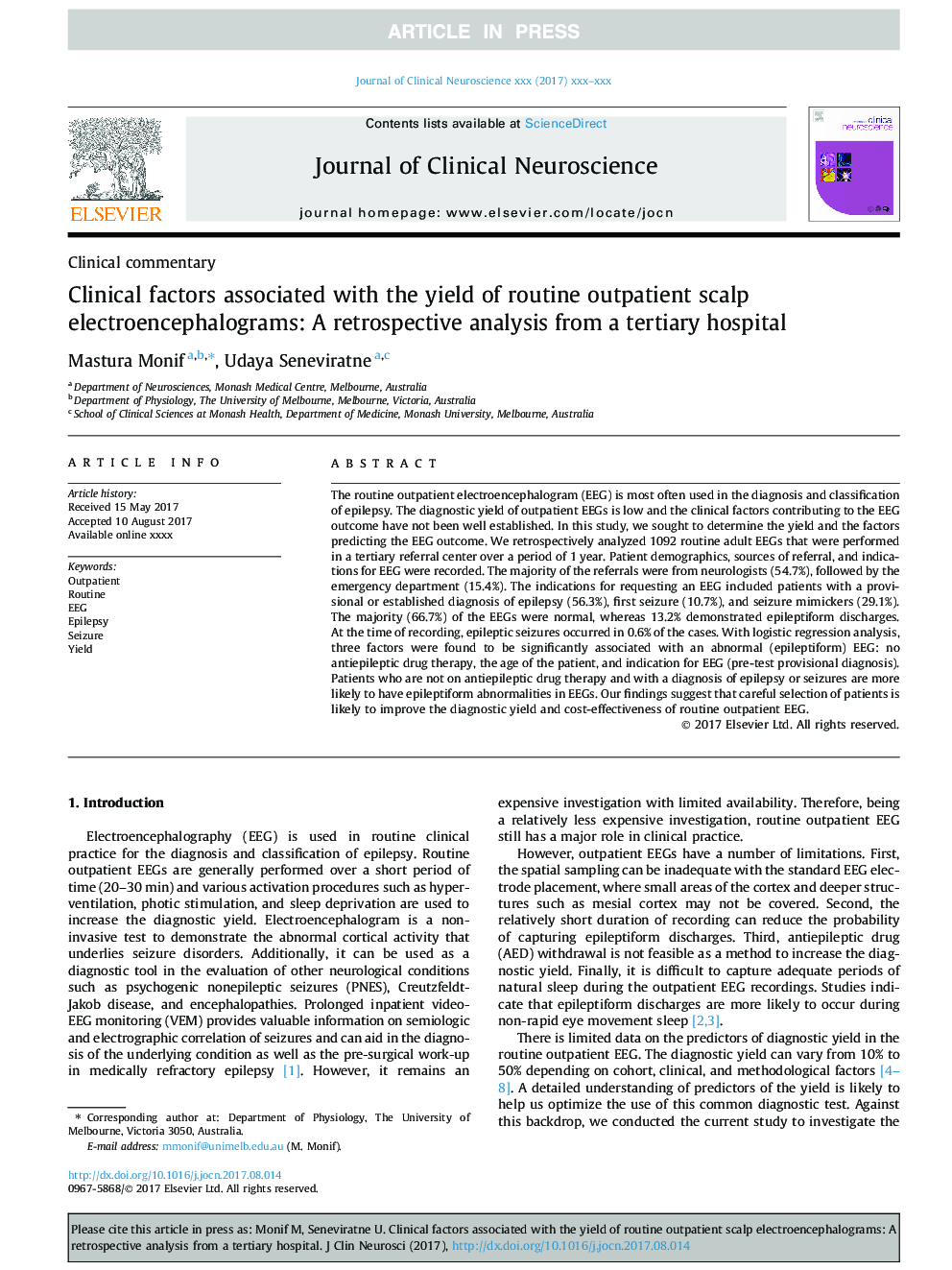| Article ID | Journal | Published Year | Pages | File Type |
|---|---|---|---|---|
| 8685522 | Journal of Clinical Neuroscience | 2017 | 5 Pages |
Abstract
The routine outpatient electroencephalogram (EEG) is most often used in the diagnosis and classification of epilepsy. The diagnostic yield of outpatient EEGs is low and the clinical factors contributing to the EEG outcome have not been well established. In this study, we sought to determine the yield and the factors predicting the EEG outcome. We retrospectively analyzed 1092 routine adult EEGs that were performed in a tertiary referral center over a period of 1Â year. Patient demographics, sources of referral, and indications for EEG were recorded. The majority of the referrals were from neurologists (54.7%), followed by the emergency department (15.4%). The indications for requesting an EEG included patients with a provisional or established diagnosis of epilepsy (56.3%), first seizure (10.7%), and seizure mimickers (29.1%). The majority (66.7%) of the EEGs were normal, whereas 13.2% demonstrated epileptiform discharges. At the time of recording, epileptic seizures occurred in 0.6% of the cases. With logistic regression analysis, three factors were found to be significantly associated with an abnormal (epileptiform) EEG: no antiepileptic drug therapy, the age of the patient, and indication for EEG (pre-test provisional diagnosis). Patients who are not on antiepileptic drug therapy and with a diagnosis of epilepsy or seizures are more likely to have epileptiform abnormalities in EEGs. Our findings suggest that careful selection of patients is likely to improve the diagnostic yield and cost-effectiveness of routine outpatient EEG.
Related Topics
Life Sciences
Neuroscience
Neurology
Authors
Mastura Monif, Udaya Seneviratne,
